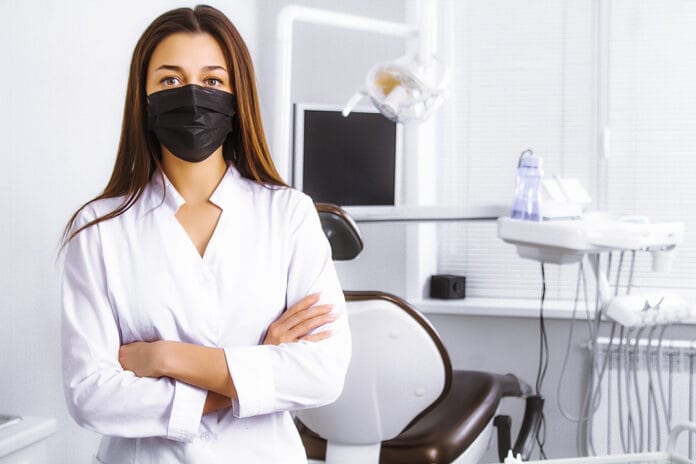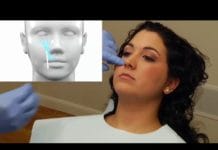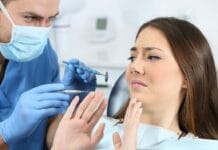Emerging infectious diseases are a concern for public health and safety. Experiencing the SARS-CoV-2 pandemic has highlighted the need to better understand the process of developing guidelines to ensure public safety while also considering financial burdens. At the start of the pandemic, dental practices were shut down as the mode of transmission and infection rate were still not completely understood.
This was a financial burden for many dental professionals, but the decisions were certainly a moral obligation as dentistry would get even more pushback from the medical community if it were determined to be a vector of disease.
As the pandemic raged on, study after study was published in every aspect imaginable regarding COVID-19. Recently, three studies that are of interest to dentistry have been published and reported by some dental associations. Some people have used these studies as a form of confirmation bias without considering the level of evidence. Therefore, I am doing a mini-review of the studies to help eliminate the risk of confirmation bias and in hopes of helping dental health care workers use these studies to better understand our role in stopping the pandemic.
Are dental health care workers at a higher risk of contracting COVID-19? It’s a question many would like to have answered. Some have already come to their own conclusion using anecdotal evidence, but what does the scientific, measurable data tell us? In order to practice in an evidence-based manner, it is crucial that we look at only the measurable evidence and leave our biases out of the equation.
Higher Risk of Infection?
The first study of interest was published in June 2021 in the Journal of the American Dental Association.1 The authors address several areas of the study which constitute a high risk of bias, including the risk of recall and social desirability biases, by answering survey questions in a manner that would be viewed as favorable by others. Though there was not consistent testing (self-reported infections vs. definitive antibody blood tests) among dentists who responded, the cross-sectional study concluded, “The low rates of cumulative prevalence (2.6%) and monthly incidence ranging from 0.2% through 1.1% reflect the high level of self-care among dentists.”
Knowing that many cases of COVID-19 are asymptomatic, without consistent COVID-19 testing, there simply is no way to determine the true incidence rate and prevalence. That doesn’t mean we should ignore this study altogether.
This study provides some pertinent information, including stressing the use of proper PPE and following the Centers for Disease Control and Prevention (CDC) guidelines to reduce the risk of infection. The CDC states, “CDC recommends using additional infection prevention and control practices during the COVID-19 pandemic, along with standard practices recommended as a part of routine dental healthcare delivery to all patients.” For CDC guidance, you can read more here.
Additionally, OSAP and the ADA teamed up to provide webinars to stay abreast of the best practices in infection control during the pandemic; future dates for upcoming webinars can be found here. However, the evidence supporting the claim that COVID incidence and prevalence and dentists are low is not supported by robust, measurable evidence.
Controlling the Aerosol
The second study of interest was published in May 2021 in the Journal of Dental Research.2 This study provides measurable evidence and in a real-world setting. This study also provides great information to guide dentistry in the best way to conduct aerosol-generating dental procedures (AGDP) safely, including the use of HVE, proper PPE, and pre-procedural rinses. PPE was in high demand during the height of the pandemic; this, unfortunately, was one of the reasons dentistry was encouraged to only see emergency patients for some time, in addition to the unknown factors regarding AGDP. Until recently, PPE prices were high, and it has taken quite some time to level off and be more affordable and accessible. In the unlikely event of another pandemic, dentistry may be put on the sidelines again, less likely due to the risk of AGDP and more likely associated with the need for PPE for frontline workers.
This study shows AGDP does not appear to be a vector for disease, at least not SARS-CoV-2. This is great news; however, it does not tell us what the level of risk is for dental health care providers. It only shows that, with proper controls, AGDP can be performed safely without an increased risk of spreading COVID-19. Keeping in mind, all the controls used in this study would need to be replicated to consistently get the same results. That means no slacking on using the HVE. This includes using an HVE attachment with an 8-millimeter borehole or greater to ensure the HVE removes a large volume of aerosols and using it during every AGDP.
This study is very useful as it provides relevant guidance with real evidence on the proper way to perform AGDP during the pandemic. This study also highlights the importance of maintaining and testing dental unit waterlines as the waterlines were the main source of microorganisms collected in this study. The American Dental Hygienists’ Association provides guidance on proper maintenance of dental unit waterlines here.
Measuring Seroprevalence
The last study of interest was published in June 2021 in the Journal of Dental Research.3 This study provides us with measurable evidence regarding seroprevalence and vaccine response. Seroprevalence was determined by blood tests identifying antibodies against the spike glycoprotein. At the start of the study, following the first wave of COVID-19, the baseline seroprevalence was reported as 16.3% among dental health care providers.
There was no difference between the rates of seroprevalence among dental providers. However, receptionists had the lowest baseline seroprevalence at 6.3%. This is suspected to be because they do not usually have direct clinical contact with patients.
The participants that were seropositive at baseline were retested after three months to determine the durability of antibodies. At the three-month re-check, 70% still had durable antibodies. Of the participants that were seronegative at baseline, 94 participants reported a positive PCR test in the interim between baseline and six months post-baseline testing; this equates to a self-reported infection rate of 9.7%.
However, when seronegative participants were retested at the end of the six months, seroconversion was detected in 19.7% of the seronegative participants. Of these seroconversions, 38.4% occurred asymptomatically, while the remainder reported illness consistent with COVID-19.
Regarding natural infection and the vaccine as a mode of protection from acquiring COVID-19, the study found that only 5.3% of this cohort that acquired natural infection developed an IgG response that would protect from reinfection. At the same time, the vaccine provided 97.7% seroprevalence with an IgG response that would provide protection.
Overall, this study found that dental health care providers were at an increased risk of acquiring COVID-19 prior to the shutdown and revised guidance for infection control measures. However, proper use of infection control measures reduces the risk for dental health care providers to the same risk level as the general population.
Conclusion
Some amazing studies are being published that highlight dentistry during the pandemic. Most are reassuring in the sense that infection control measures seem to be very effective when implemented properly. The last study highlighted shows that the shutdown was necessary to re-evaluate infection control and make a few adjustments to ensure occupational safety as well as the safety of our patients.
Each study is valuable as long as the limitations are addressed and understood. The biggest takeaway from all three of these studies is that upping our infection control and PPE game was the right choice. It would benefit clinicians and patients to continue these practices even after the pandemic is a distant memory.
Need CE? Check Out the Self-Study CE Courses from Today’s RDH!
Listen to the Today’s RDH Dental Hygiene Podcast Below:
References
- Araujo, M.W.B., Estrich, C.G., Mikkelsen, M., et al. COVID-2019 among Dentists in the United States: A 6-month Longitudinal Report of Accumulative Prevalence and Incidence. J Am Dent Assoc. 2021 Jun; 152(6): 425-433. doi: 10.1016/j.adaj.2021.03.021. PMID: 34044974; PMCID: PMC8142320. Retrieved from https://jada.ada.org/article/S0002-8177(21)00204-X/fulltext
- Meethil, A.P., Saraswat, S., Chaudhary, P.P., Dabdoub, S.M., Kumar, P.S. Sources of SARS-CoV-2 and Other Microorganisms in Dental Aerosols. J Dent Res. 2021 May 12: 220345211015948. doi: 10.1177/00220345211015948. Epub ahead of print. PMID: 33977764. Retrieved from https://journals.sagepub.com/doi/10.1177/00220345211015948
- Shields, A.M., Faustini, S.E., Kristunas C.A., et al. COVID-19: Seroprevalence and Vaccine Responses in UK Dental Care Professionals. J Dent Res. 2021 Jun; 2: 220345211020270. doi: 10.1177/00220345211020270. Epub ahead of print. PMID: 34077690. Retrieved from https://journals.sagepub.com/doi/10.1177/00220345211020270











